Highlights
- See the birthplace of Apollo and Artemis at Delos
- Cruise through the caldera of Santorini
- Trek Samaria Gorge in the White Mountains of Crete
- Take day trips to historic Delphi, Meteora, and Mycenae
Brief Itinerary
| Day | Highlights | Overnight |
|---|---|---|
| Day 1 | Arrive in Athens | Athens |
| Day 2 | Acropolis and Ancient Greek Mythology Tour | Athens |
| Day 3 | Morning Bike Ride & Sounion Sunset Tour | Athens |
| Day 4 | Day Trip to Hydra | Athens |
| Day 5 | Athenian Cooking Class | Athens |
| Day 6 | Athens to Mykonos | Mykonos |
| Day 7 | Farm Visit and Mykonian Dinner | Mykonos |
| Day 8 | Day Trip to Delos | Mykonos |
| Day 9 | Mykonos to Santorini | Santorini |
| Day 10 | Santorini Tour & Wine Tasting | Santorini |
| Day 11 | Santorini Catamaran Cruise, Ferry to Crete | Heraklion |
| Day 12 | Guided Knossos and Heraklion Tour | Heraklion |
| Day 13 | Travel to Chania, Explore the Villages of Apokoronas | Chania |
| Day 14 | Trek Samaria Gorge | Chania |
| Day 15 | Vamos Cretan Delicacies Experience Day Trip | Chania |
| Day 16 | Old Town of Chania Tour | Chania |
| Day 17 | Return to Athens, Neighborhood Walking Tour | Athens |
| Day 18 | Day Trip to Delphi | Athens |
| Day 19 | Day Trip to Meteora | Athens |
| Day 20 | Visit Mycenae and Nafplio | Nafplio |
| Day 21 | Monuments of Epidaurus Tour | Nafplio |
| Day 22 | Nemea Winery Exploration | Nafplio |
| Day 23 | Olive Experience | Nafplio |
| Day 24 | Nafplio to Athens and Depart |
Detailed Itinerary
Day 1: Arrive in Athens
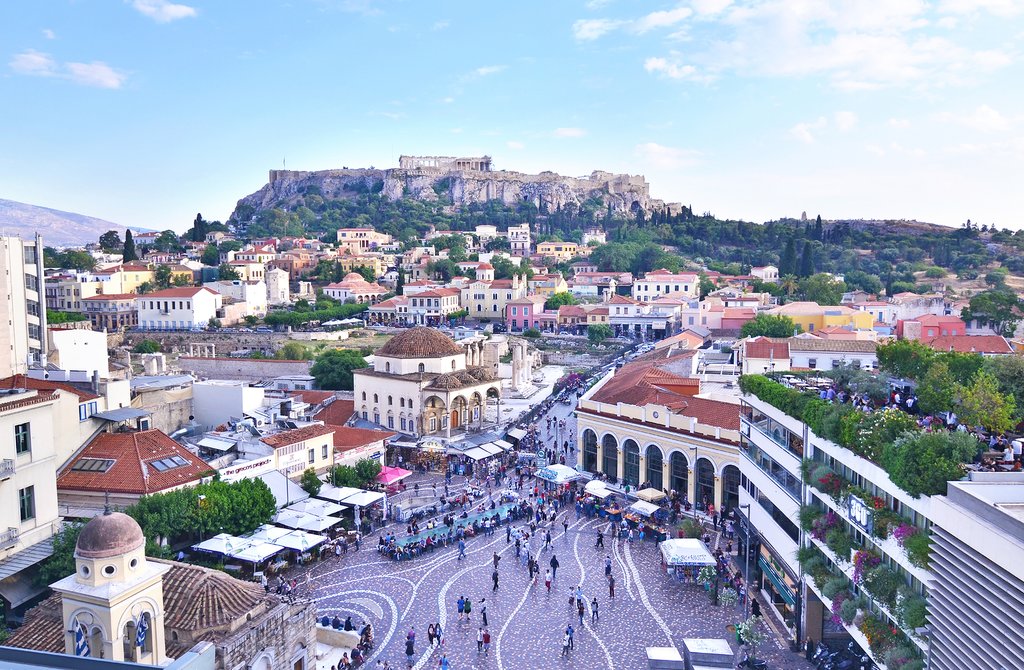
Welcome to Greece! You'll begin your trip in Athens, home to both the iconic Acropolis and so much more. The mythology of this spectacular city precedes it, with towering temples to Classical deities and the ruins of ancient marketplaces rubbing shoulders with lively nightlife, crowded flea markets, and contemporary cuisine. Make the most of your time in the city at some of these spots:
- Check out the views of the can't-miss Parthenon. (Pro tip: The Parthenon is the temple, the Acropolis is the hill.) This temple to Athena has enchanted visitors since its construction was completed in 438 BC. It's probably the first thing that comes to your mind when you think of ancient Greece and is visible from many of the city's high points.
- Stop at the sprawling National Museum for a crash course in ancient iconography. Be sure to seek out the room housing the Antikythera mechanism, essentially an ancient astronomical computer.
- Visit a smaller archaeological site at the Tower of the Winds, then stroll down neighboring pedestrian Aiolou Street to stop at shops and cafes.
- Find your perfect souvenir or sun hat in the busy stalls of the Monastiraki flea market.
Spend your evening exploring the up-and-coming Pangrati neighborhood or amid the nightlife and mezze of the Psyrri district.
Day 2: Acropolis and Ancient Greek Mythology Tour
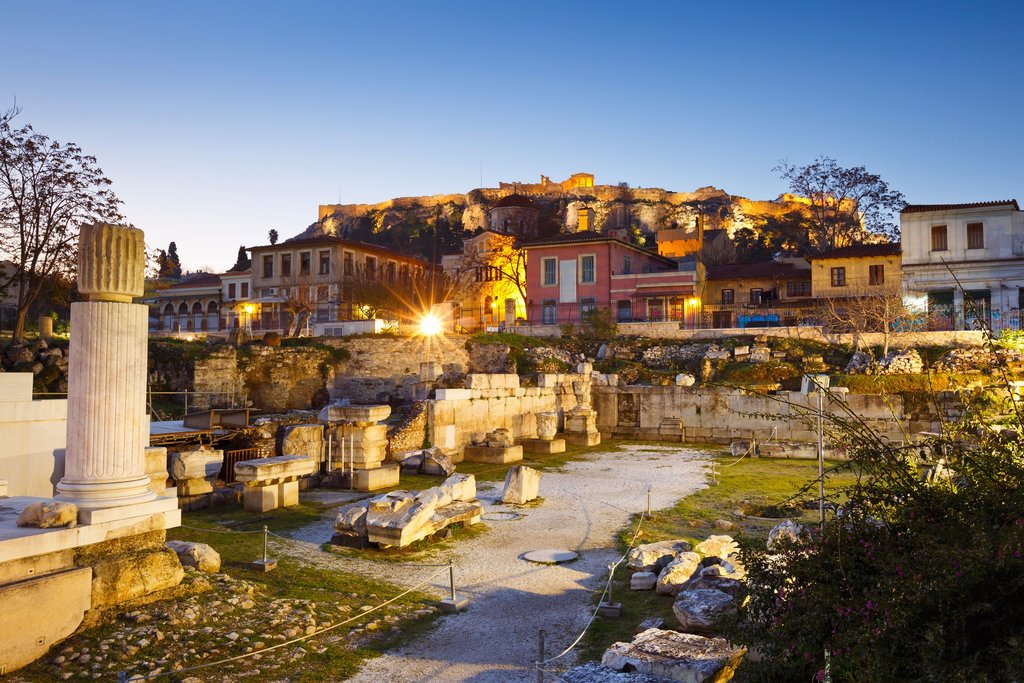
Experience the ancient stories surrounding you with today's guided mythology tour. You'll meet your guide and storyteller at the Temple of Olympian Zeus, then head to landmarks around the city including the Acropolis, ancient cemetery at Kerameikos, and the Agora. The myths that founded the city and are featured in its retellings for generations will accompany as you go, with stories of Zeus, Athena, Poseidon, Dionysus, and more. Hear both the stories themselves and the historic facts behind them, adding resonance to the archaeological ruins you will visit during this four-hour tour.
Make your way over to explore the Acropolis Museum on your own after your tour (or join a guide if you'd prefer). Named one of the ten best museums in the world by National Geographic, this modern museum houses a multitude of artifacts removed from the hill of the Acropolis for safekeeping to provide insight into ancient religious practices and daily life. Linger for lunch in the museum's cafe, with views of the artifacts' former hilltop home.
As night falls, you may be able to visit the Athens Observatory to learn about the constellations overhead and take a look through the telescope. Its hours vary seasonally and by day of the week.
Day 3: Morning Bike Ride & Sounion Sunset Tour

Say kalimera with a good morning bike ride around the city, accessible to riders of all levels. You'll wheel past many of the highlights of the city over the course of three hours, complete with a coffee break at a cafe. Your guide will tell you about all the spots you pass, such as the Panathenaic Stadium, National Gardens, the Agora, Keramikos, and of course the Acropolis, along with insider tips on the best spots to eat and drink in Athens and plenty of breaks to take in the views.
Drop off your bike and switch to someone else's energy with a minibus trip down the coast to the Athenian Riviera and Cape Sounion. Visit the Temple of Poseidon while your guide provides you with historical background on the way. The views overlook the Saronic Gulf, with one of the best sunset views Greece has to offer. Sip a complimentary beverage and take in the sunset while you listen to music and immortalize the moment with a Polaroid-style photo.
You'll be transferred back to your lodging in the evening just in time for a late (Greek-style) dinner. Or, if you're not ready to call it a night, you can request a drop-off at some of the most popular beach bars to dance until the sun comes up.
Day 4: Day Trip to Hydra

A morning transfer to the port and boat ride from Piraeus will take you to Hydra, the Grand Lady of the Argosaronic Gulf. This car-free island maintains a historic charm in the houses that rise like an amphitheater up around the port and donkeys clopping their way through the streets. Locals still brag about Sophia Loren's visit to their shores to film Boy on a Dolphin, along with other storied visitors from Picasso to Leonard Cohen.
Stroll through its winding alleys for a glimpse into the island's naval history, with multiple house museums in the homes of former sea captains that tell the story of its role in the naval battles of the Greek revolution. Make your eventual way to the Kamini marina outside of town. You'll find regular art exhibitions at the Red House, traditional cuisine at Kodylenia's taverna, and a spot to cool off with a leap off the rocks into the inviting waters below.
If you'd rather wade in than jump, hire a boat taxi from the port out to hidden beaches at Vlichos and Limnioniza, where sunbeds await to keep you comfortable on the pebbly shore.
You'll be returned to Athens and your hotel as the day winds down.
Day 5: Athenian Cooking Class

After sampling so much food around the city, it's time to learn how to do it yourself. You'll visit a contemporary multi-use space home to four shops in one—a coffee house, pie shop, creamery, and kitchenette—and the perfect setting for your lesson. Discover local products from around Greece and experiment with traditional recipes to create your own twist on the classics. And, of course, sample all of it. Savor the fruits of your labor while taking in views of the Acropolis and surrounding Plaka neighborhood.
Digest with a stroll to the Greek Parliament at Syntagma Square. Linger until the changing of the guard to catch their highly choreographed routine, complete with tsarouchia pom-pom shoes and the obligatory deadpan expressions.
Day 6: Athens to Mykonos

You'll start your time in the islands on Mykonos, one of the most famous islands in the Cyclades chain. Known for its glitzy restaurants and nightlife, art scene, and jet set crowds (it was recently home to a Gucci pop-up boutique), Mykonos will throw you headfirst into your island adventure.
Your first day's itinerary is up to you. You'll receive a personalized list of tips for exploration, but some highlights include:
- If you need to get your toes in the sand immediately, head to remote Agios Sostis beach to find your own isolated paradise.
- For a more active experience, Ftelia Beach is known for its excellent windsurfing.
- Stroll through Little Venice, an 18th-century neighborhood where colorful former captains' mansions and seaside restaurants seem to sprout straight from the sea. It's also right next to the island's famous hillside windmills for great photo ops.
Day 7: Farm Visit and Mykonian Dinner

The morning is yours to explore, so head to a beach to lounge or stroll through the cosmopolitan streets, scoping out the boutiques that draw the island's stylish crowd season after season.
In the afternoon, you'll pay a visit to a traditional farm. Talk to the farm's caretakers to learn about how vegetables are grown on the islands and how the livestock are raised, and even say hi to the animals.
As the sun begins to set, you'll sit down to a traditional dinner. You'll be welcomed into a local Mykonian household for the meal, where you'll experience the traditional Greek way of life, culture, and cooking. Hear all about their stories of the island's culture and history as well as their own family history, over authentic dishes and free-flowing local wine (for the older crowd).
Day 8: Day Trip to Delos

Travel back in time after breakfast with a morning boat ride out to the archaeological site at Delos. You'll board a small boat at the old port to cruise for 45 minutes out to one of ancient Greece's most sacred sites. This small island was the center of the Cyclades during the Classical era and the mythological birthplace of twin deities Apollo and Artemis. Pilgrims from around the region were attracted to the mystical site and helped it evolve into one of the largest trade centers of the Mediterranean.
Your guided tour will wind you through the foundations of former traders' mansions, temples, and landmarks such as the Terrace of the Lions. Don't skip the island museum, where many of the smaller artifacts and frescoes have been moved to protect them from the elements.
You'll return to Mykonos in time to catch up on your shopping in your the afternoon as you explore some of the best boutiques in the Aegean, or check out the weathered Faros Armenistis lighthouse perched high above the Aegean on the island's northwestern tip, with views across to the neighboring island of Tinos.
Chat with a local specialist who can help organize your trip.
Day 9: Mykonos to Santorini

After breakfast at your hotel, you'll get an early ferry to Santorini. Nothing says "good morning" like watching the sun coming up over the island's iconic cubic architecture. Upon arrival, you'll take in the island's central caldera—the site of one of the largest volcanic eruptions in history—rising above you.
The island's volcanic history has led to the formation of some of the more unique beaches in the Greek islands, along with the dramatic cliff views on the island's caldera side. Spend your day relaxing at the beach or catching some exercise—and even more views—from one of Santorini’s more than 12 scenic walking routes, ranging from between two to eight miles each. At dinner, sample the island's signature cherry tomatoes and white eggplants as guest stars in seafood dishes or the main event.
Day 10: Santorini Tour & Wine Tasting
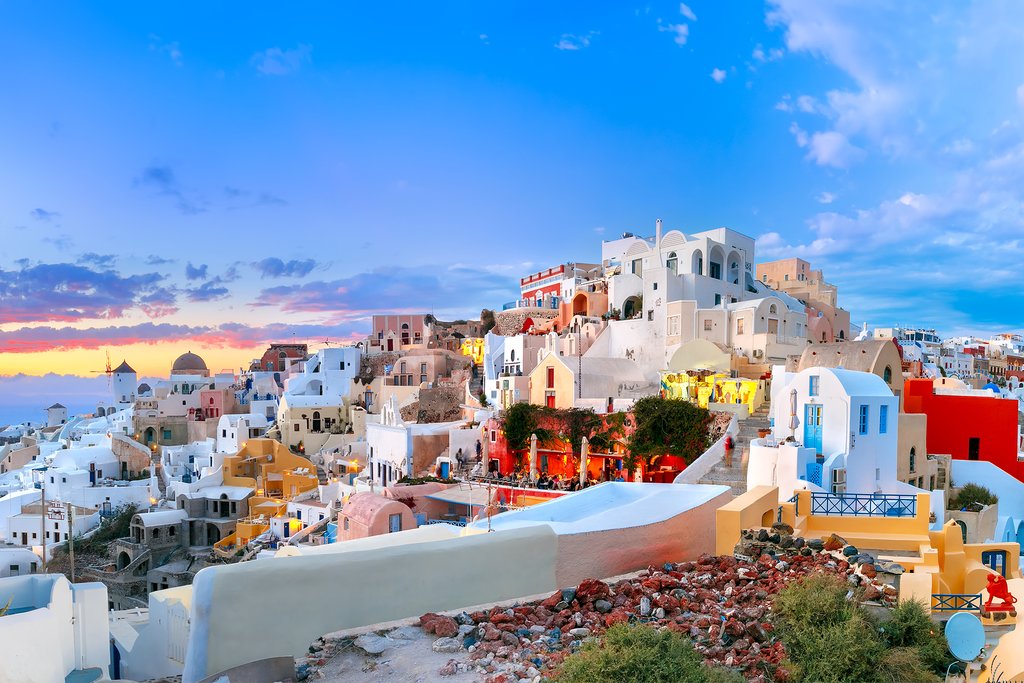
The morning is yours to spend as you will, whether that's browsing the boutiques of Fira or getting beachside. Don't wear yourself out too soon, though, as in the afternoon you'll take a guided tour that will show you a side of Santorini that most travelers don't see.
You'll check out hidden gems in Oia, the furthest town along the rim of the caldera. Oia's arty streets are the quintessential Santorini scene. Later, you'll take a trip up to the highest peak on the island. Bring your camera for the 360 degree views at the top, as well as the many stops on your way down. You'll also see medieval villages at Megalochori and Pyrgos and the Blue Dome in Firostefani before your voyage ends with a wine tasting to sample varietals dating back centuries, complete with epic caldera views as the sun goes down.
In the evening, return to Oia to wander the alleys and linger in the town's tavernas into the evening and experience a calmer vibe after the sunset crowds subside. When searching for your dinner, seek out tomato keftedes, deep-fried tomato balls that encapsulate the essence of the Mediterranean diet, and the Santorini specialty spelt pie.
Day 11: Santorini Catamaran Cruise, Ferry to Crete

Enjoy a leisurely morning breakfast before taking some time to stroll and scope out small shops and boutiques. Explore Fira, the capital of the island, which offers plenty to check out. History buffs will be delighted by proximity to the Archaeological Museum of Santorini, the Museum of Prehistoric Thera, the Folklore Museum of Emmanuel Lignos, and the church of Hypapante.
As the day unfolds, you'll head toward Vlychada Port to board your semi-private catamaran cruise around the island. Your first stop will be at the Red Beach to swim and sun, followed by a second stop at the White Beach to take in all the distinctive-colored sands of Santorini.
Barbecue will be served onboard while you sail past landmarks at Aspronisi, the Ancient Lighthouse, Indian Rock, and the prehistoric city at Akrotiri, hidden away at the southern tip of Santorini. These ruins are the site of some of the Bronze Age’s most advanced settlements, which prospered for centuries before being destroyed by a great volcanic eruption in the mid-second millennium BC. Top it off with a jump into the hot springs at Nea Kameni, where the mineral-rich volcanic waters are believed to have therapeutic properties.
Once you return to port, you'll be transferred to your ferry to Crete, the largest and most populous of the 230 inhabited Greek islands, and its capital city of Heraklion.
Day 12: Guided Knossos and Heraklion Tour

Set off for a guided exploration of the magnificent Palace of Knossos. This 3,500-year-old Minoan palace is a sprawling maze of royal chambers, grand staircases, storerooms, and workshops. The evocative Bronze Age site is believed to be Europe's oldest city; it flourished for nearly 2,000 years as an economic center, trading with cities across the Mediterranean.
Follow it up with a guided stroll through the streets of Heraklion, exploring the old city's medieval streets with architecture representing the island's Venetian past. Highlights include the elegant arches of the Loggia, now in use as the town hall, and the Koules Venetian fortress along the harbor walls. In the afternoon, don't miss the Archaeological Museum, home to one of the largest collections of Minoan artifacts in the world.
Spend the evening strolling with the locals through the old town of Heraklion. A pleasant pedestrian street connects the port area with the Lions' Square and its Venetian fountain. Don't miss "mama's food" at Anchorage Traditional Mezedopolio nearby.
Day 13: Travel to Chania, Explore the Villages of Apokoronas
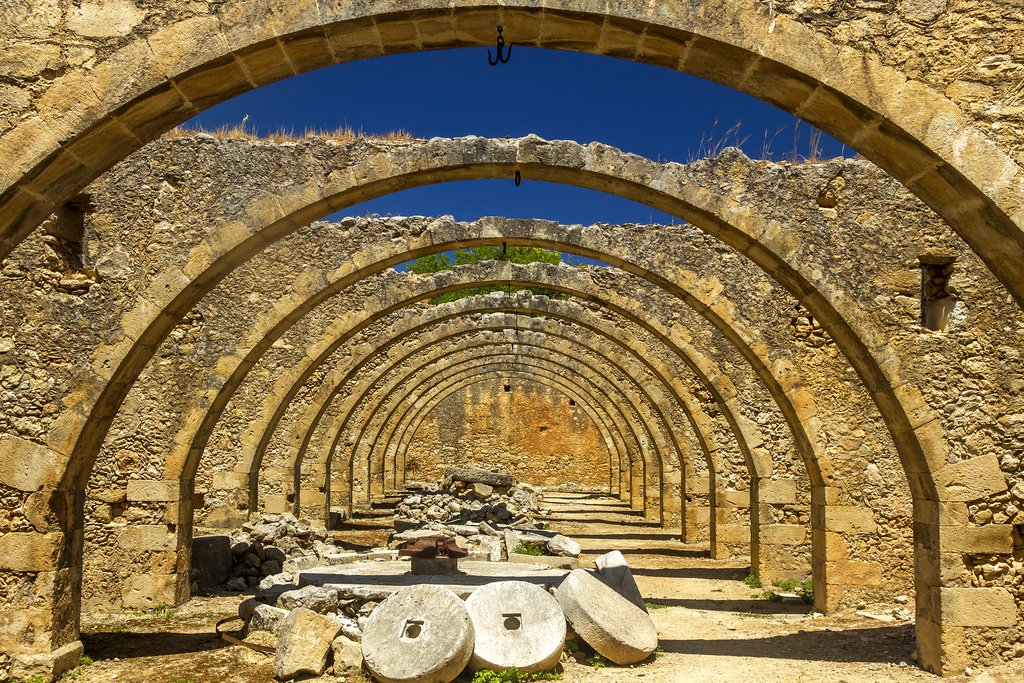
Today, you'll continue onward to Chania, a city (and region) on the northwest coast of Crete. Chania itself is the second largest city in Crete and one of the most scenic spots on an island with stiff competition for that title. Life in this former Venetian city revolves around its charming 14th-century harbor, narrow streets with winding alleys, and colorful architecture influenced by past Ottoman and Egyptian eras.
Once you're settled, you'll have a chance to hear some of the island's history firsthand during a guided tour through nearby Apokoronas. The region's villages—seven of them—are home to a number of sites including an Ottoman fort, historic churches, and a folklore museum. But most interesting will be the conversations you and your guide will have with the local residents of the area.
Some potential highlights include:
- The hillside ruins at ancient Aptera, one of the largest city-states in Crete until it was destroyed by an earthquake in the seventh century, including a Minoan tomb believed to date back to roughly the 13th century BCE.
- Two-aisled churches in Stilos village from the 13th and 15th centuries, along with a limestone fossil once believed to be a fossilized sea siren and a walk along the Kiliaris river to a Venetian watermill.
- A glassblowing factory in Kokkino Chorio.
- The old square of Gavolochori, where you can visit the women's cooperative and see hand-knit lace created using a Byzantine technique or the neighboring Folklore Museum of Gavalochori.
In the evening, check out Chania's waterfront districts of Halepa and Tabakaria. Wander among former tanneries and factories in these off-the-beaten-track parts of town, just past the end of the main promenade.
Day 14: Trek Samaria Gorge

After breakfast, you'll be picked up at your hotel nice and early to explore one of Crete's natural wonders. Set amidst the scenery of the White Mountains is the popular hike through Samaria Gorge. The trek takes approximately five hours to cover the gorge's approximately 11 miles (18 km), most of which are downhill and during which you'll spot flora and fauna of all kinds. As your trail nears its end, you'll descend a gentle slope down to the peaceful beach at Agia Roumeli on the turquoise Libyan Sea where you can take a dip and wash off the trail dust.
There will be time to linger on the sand and relax before you wrap up the outing with a boat trip to Chora Sfakion, where your coach will be waiting to return you to your hotel in Chania.
Day 15: Vamos Cretan Delicacies Experience Day Trip

Meet the farmers and food specialists of Crete on today's tour. Your guide will take you out to the traditional village of Vamos and the surrounding area to meet these creators and sample their products.
You'll start at the local olive oil factory, where you'll learn about its production process and sample some of the fresh oil, along with an explanation of what distinguishes Cretan virgin olive oil from other oils.
Next up, the local cheesemaker. Crete is known for its graviera cheese, a slightly sweet, hard sheep cheese. You may watch the expert on duty as he makes graviera and teaches you about the cheese-making process, with samples of different varieties including graviera, anthotyros, and myzithra. It's also time for your first raki of the day, a grape-based spirit that's also Crete's national drink.
Head to the 14th century Byzantine church of Saint Nicolas on your way to the next stop to take in its frescoes and architectural features. Afterward, you'll arrive in the village of Hiliomoudou, where one of the few hand producers of sheep and goat bells practices his craft. You can watch him work and learn how to distinguish between the sounds of sheep and goat bells while sipping your second raki.
End as you began at a second olive oil press, this time home to both the rarer organic olive oil and the elusive Cretan kri kri goats, a species only found on this island. See if you can spot them as you sit at the taverna and enjoy a traditional lunch with all the ingredients you've just observed.
Walk off all those samples with an afternoon stroll around Vamos, surrounded by local history and hospitality, before returning to Chania. Or, stay in Vamos for a peaceful evening in a traditional guesthouse.
Day 16: Old Town of Chania Tour

Today, you'll experience the streets, buildings, high spots, neighborhoods, and monuments that only locals know with a guided tour. Walk the stone paths where the Venetians, the Ottomans, and older generations of Cretans used to live and work, admiring the flower-decorated neighborhoods. You'll learn about Cretan history, the Cretan mythology and traditions, meet the locals, and eat like the locals.
Visit the neighborhoods of Topanas, Splantzia, Kolombo and Kasteli, along with high spots to admire the panoramic view of the harbor, as well as traditional Cretan taverns and magnificent buildings. You'll also see the ruins of the great Minoan city of Kydonia and high walls of former Venetian moats now integrated into the city.
When hunger strikes, visit the Municipal Market of Chania and neighboring Municipal Garden to enjoy a coffee amid the shade of the trees or garden clocktower. Then, top it off with a sunset drink on the rooftop at trendy Pallas.
Day 17: Return to Athens, Neighborhood Walking Tour

Return to Athens after breakfast.
Once you've returned, you'll see more of contemporary Athens with today's walking tour. Cover six neighborhoods of the city, traveling across both geographic and demographic demarcations. Your expert guide will tell you about the history and transformations that these blocks have undergone. Take in the downtown vibe and daily bustle as you enjoy coffee like a local.
Stroll over to Monastiraki when your tour is complete to sample some of the city's best souvlaki spots. If you'd prefer a more international set of options, the Syntagma neighborhood is for you, where you can find the neo-tavernas of Aiolou Street, street foods, and fresh juices. Sample the loukoumades, fried honey dough balls, to appease your sweet tooth.
Day 18: Day Trip to Delphi

Today, you'll seek out the oracle during a day trip to the ruins of Delphi, once home to priestesses of Apollo who Ancient Greeks believed could predict the future. After being transferred from your hotel to Delphi (about 2.5 hours from the city), you'll take a guided tour through this sprawling archaeological site, with stops such as the Treasury of the Athenians, the Temple of Apollo, and expansive theater.
Explore the ruins or venture up an ancient footpath once used by worshippers of the god Pan, who started from the temples of Delphi and proceeded to Corycean Grotto for their religious rites, surrounded by the valley of olive trees and views of the Corinthian Gulf and peaks of the Peloponnese on your way.
Outside of the ruins, you'll head to an old town district that used to serve as the leather tanner's district. One of Greece's last bellmakers keeps his workshop here; if you're lucky, he may be on site for a visit. Lunch will be served under the plane trees in the town square, with cheeses, Amfissa olives, and traditional home cooking.
Head indoors after lunch to the museum, a short downhill walk away. Wander through its halls to find the bronze Charioteer of Delphi, marble Sphinx of Naxos, and what may be the first recorded notation of a melody once inscribed on the walls of the Athenian Treasury.
You'll be transferred back to Athens in the late afternoon to rest up or spend the evening out and about in the city.
Day 19: Day Trip to Meteora

Travel by train across the Central Greece countryside for a day among the famous monasteries of Meteora. These religious buildings sit atop rock formations that are more than 60 million years old. You'll tread the same paths that monks used for hundreds of years to reach these holy places, perched close to 1,000 feet in the air above the canyons of the Pindos range. Before the paths were constructed, the monastery residents used nets and rope ladders to hoist goods (and sometimes their fellow clergy) to the clifftops.
The roughly five-hour train ride will take you from Athens through the rural landscape to Kalabaka, the town gateway to Meteora. You'll meet your guide and be transferred up to Meteora itself for three hours among the monasteries. You'll see all six of the monasteries, with visits inside one or two of them for a glimpse of what the ninth-century monastic life may have been like. There will also be stops for photos and other detours along the way before your return to the train station and Athens.
Day 20: Visit Mycenae and Nafplio

Start the day early with a guided trip back to a true classic. You may recognize Mycenae from its role in Homer's Iliad: It was home to the famous Helen, whose Mycenean husband King Agamemnon led his people to war when she left him for Paris of Troy. See its Cyclopean walls, whose construction method is still a mystery. They got their name due in part to the belief that only the mythical Cyclops would have been strong enough to lift their boulders.
You'll pass through the Lion Gate with your guide to enter the ruins of the city, wandering past the tombs of Aegisthus and Clytaemnestra and the Treasury of Atreus.
You'll go on to Nafplio, one of the prettiest seaport towns in the Peloponnese peninsula and once believed to have been founded by the son of Poseidon. The town was the first capital of the new Greek state after the war of independence in the 1800s. You'll take a guided stroll through the old town, where you'll pass statues honoring significant figures from Nafplio's history, Ottoman fountains, and Venetian architecture along the winding streets, topped off by the Bourtzi Castle in the middle of the harbor.
Later, don't miss the climb up 1,000 steps to see the view from the Palamidi Castle. Spend a relaxing evening wandering the quiet streets or walking along the waterfront.
Day 21: Monuments of Epidaurus Tour

Today's hour-long guided tour will give you an introduction to the highlights of the Epidaurus region. You'll learn about the local history and traditions as you explore the remains of this ancient city, which was one of the most visited healing centers in the world during its peak. The sick would travel to the Sanctuary of Asklepios, the god of medicine and healing. They would spend the night in the temple's sleeping hall in hopes that the deity would appear in the dreams with a diagnosis and cure for their condition, whatever it may have been.
You'll also see the city's third-century theater, one of the best remaining examples of its type due to the excellent acoustics and aesthetic arrangement and a UNESCO World Heritage site. It was originally designed for musical and singing competitions, and is the largest stone resonator in the world. Aeschylus, Sophocles, and Euripides all had plays performed here.
Depending on the timing of your trip, you may even be able to catch a performance on the ancient stage.
In the afternoon you'll return to Nafplio, where you can take a long walk along the beautiful promenade which heads from the town's harbor around the point and continues down the coast all the way to Karathona beach. For dinner, check out Aiolos Taverna in the old town.
Day 22: Nemea Winery Exploration
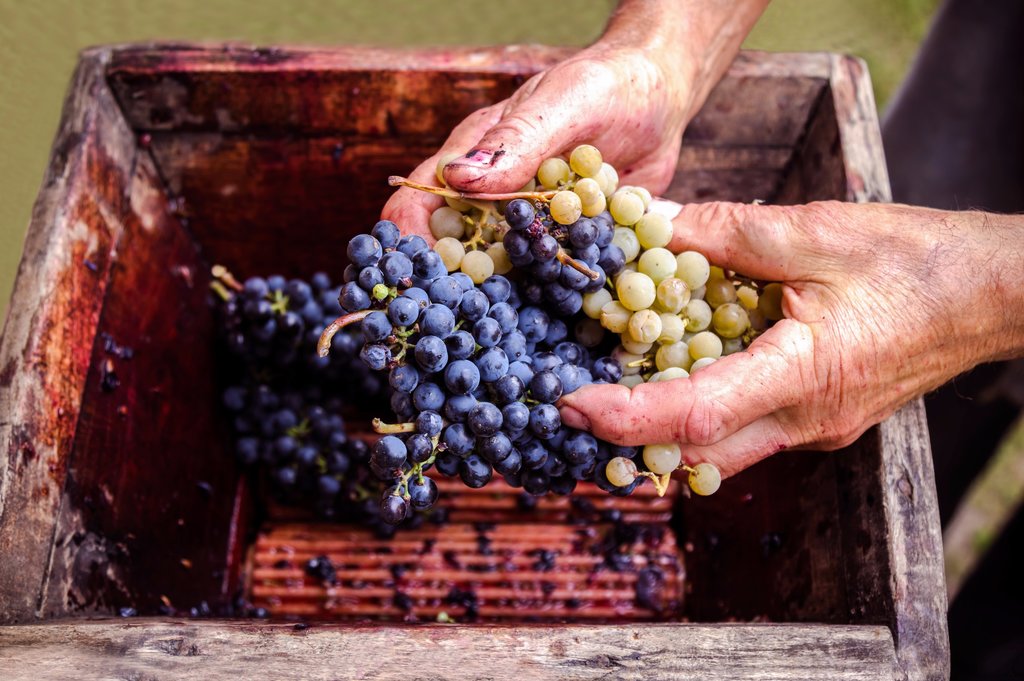
Spend your day among the wineries of Nemea, one of the country's most important wine-producing areas. They're especially known for their Agiorgitiko wine, believed to have been first grown from a vine brought by the god Dionysus. These grapes, which are similar to Merlot, are considered to be one of the finest Greek red varietals and have grown in the region for thousands of years—possibly since the 4th century BC. The ancient red wine called Fliasion was also believed to be produced in this area.
You'll visit three wineries to observe the wine-making process and stroll through the vineyards. And, of course, sample the varietals along the way, along with a lunch of local cuisine with wine pairings at one of the stops.
If you find yourself fondly remembering any particular bottles later that you wish you'd purchased, the local cooperative also operates an outlet where many of the wines are available.
Day 23: Olive Experience

Greece has been enjoying the benefits of olive oil for centuries, and now you can take part in this culinary tradition. You'll begin after breakfast with a drive out to a rural village roughly 5 miles (8 km) outside of Nafplio. Visit the local owners to see how the olive oil-making process works and learn about its steps, as well as meet some of the farm's other inhabitants with a sheep-milking session.
Next, visit the groves themselves, enjoying a picnic experience underneath the shade of the trees and lunch in a family taverna. If you arrive in the harvest season, your experience will even include picking olives in the orchard alongside the workers.
Head back to town in the late afternoon, where you'll have a new appreciation for your dinner's ingredients. Top it off by buying a bottle of wine in a local shop to take home. You're in one of the most notable wine areas of Greece, after all. Look for an Agiortiko or another native grape varietal.
Day 24: Nafplio to Athens and Depart

Time to say goodbye to Greece! You'll be transferred back to Athens International Airport after breakfast.


